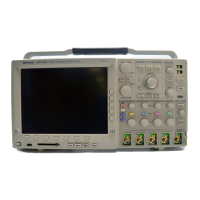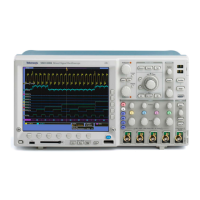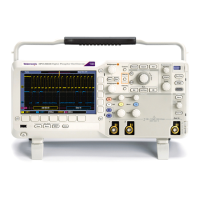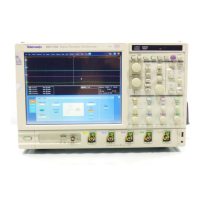Analyze Waveform Data
If desired, use the zoom feature along with the horizontal Position and Scale cont rols to magnify and position the FFT
waveform.
Use the default dBV RMS scale to see a detailed view of multiple frequencies, even if they have very different amplitudes. Use
the linear RMS scale to see an overall view of how all frequencies compare to each other.
The FFT feature provide s four windows. Each is a trade -off between frequency resolution and magnitude accuracy. What y o u
want to measure and your so urce signal characteristics help determine which window to use. U se the following guidelines
to se le ct the best window.
Description Window
Rectangular
This is the best type of window for resolving frequencies that a re very close to the same value but
worst for accurately measuring the amplitude of those frequencies. It is the best type for measuring
the frequency spectrum of nonre petitive signals and measuring frequency components near DC.
Use Rectangular for measuring transien ts o r bursts where the signal level before and after the
event are nearly equal. Also , use this window for equ al-amplitude sine waves with frequencies that
are very close and for broadband random noise with a relatively slow varying spectrum.
Hamming
This is a very good window for resolving frequencies that are very close to the same value with
somewhat improved am plitude accuracy over the re c tangular window. It has a slightly better
frequency resolution than the Ha nning.
Use Hamming for measuring sine, periodic, and narrow band random noise. This window works
on transients or bursts where the signal levels before and after the event are significantly different.
156 DPO4000 Series User Manual
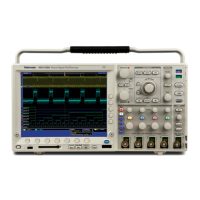
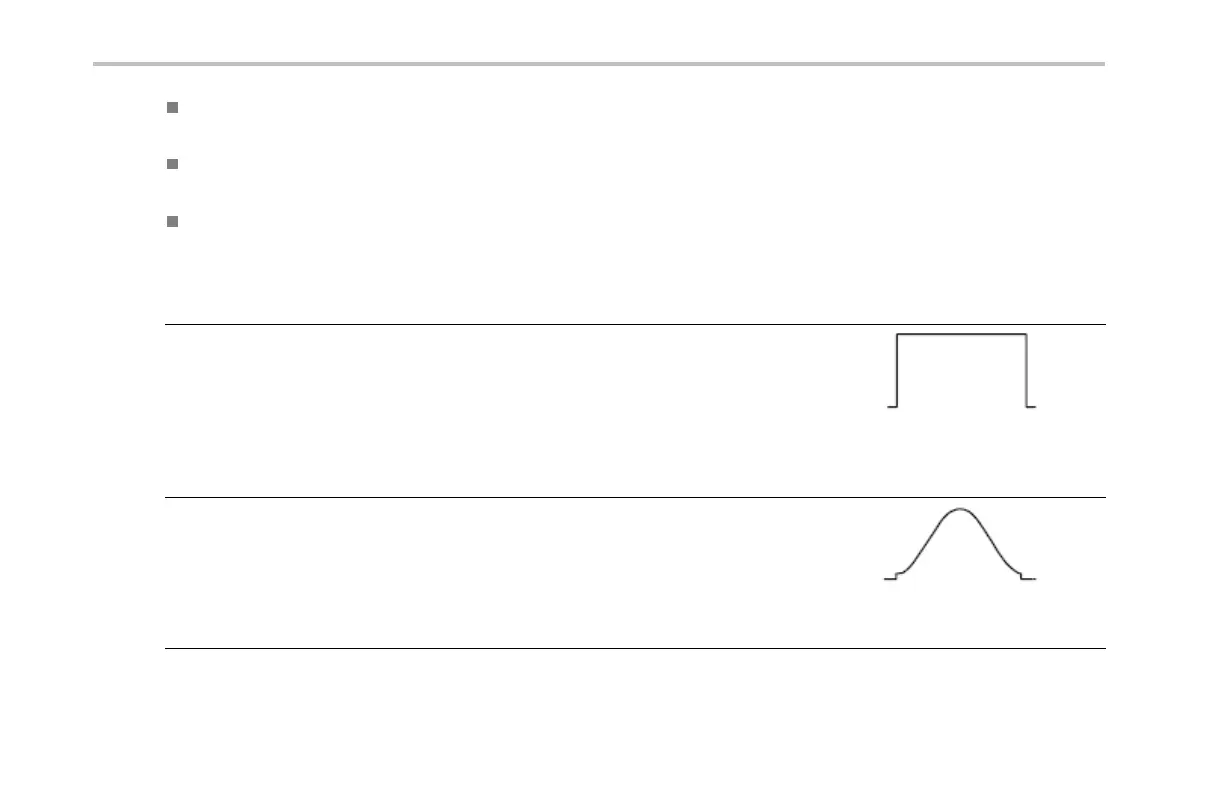